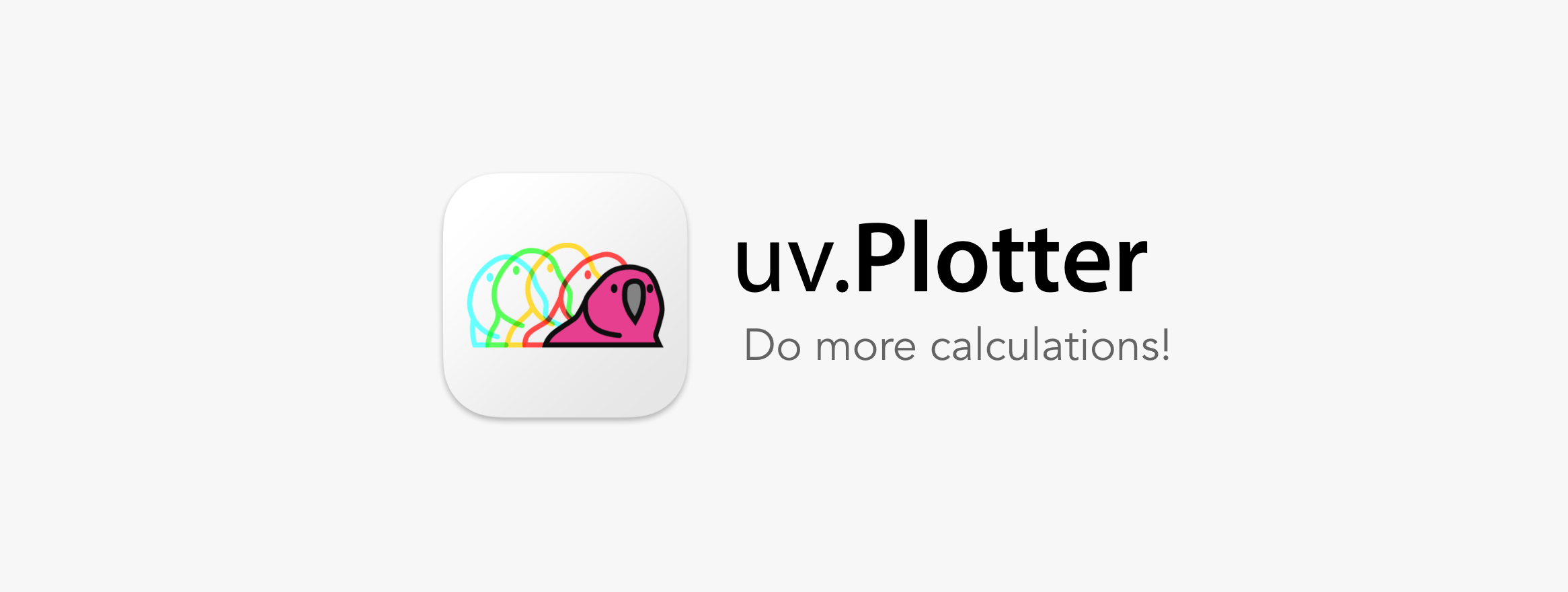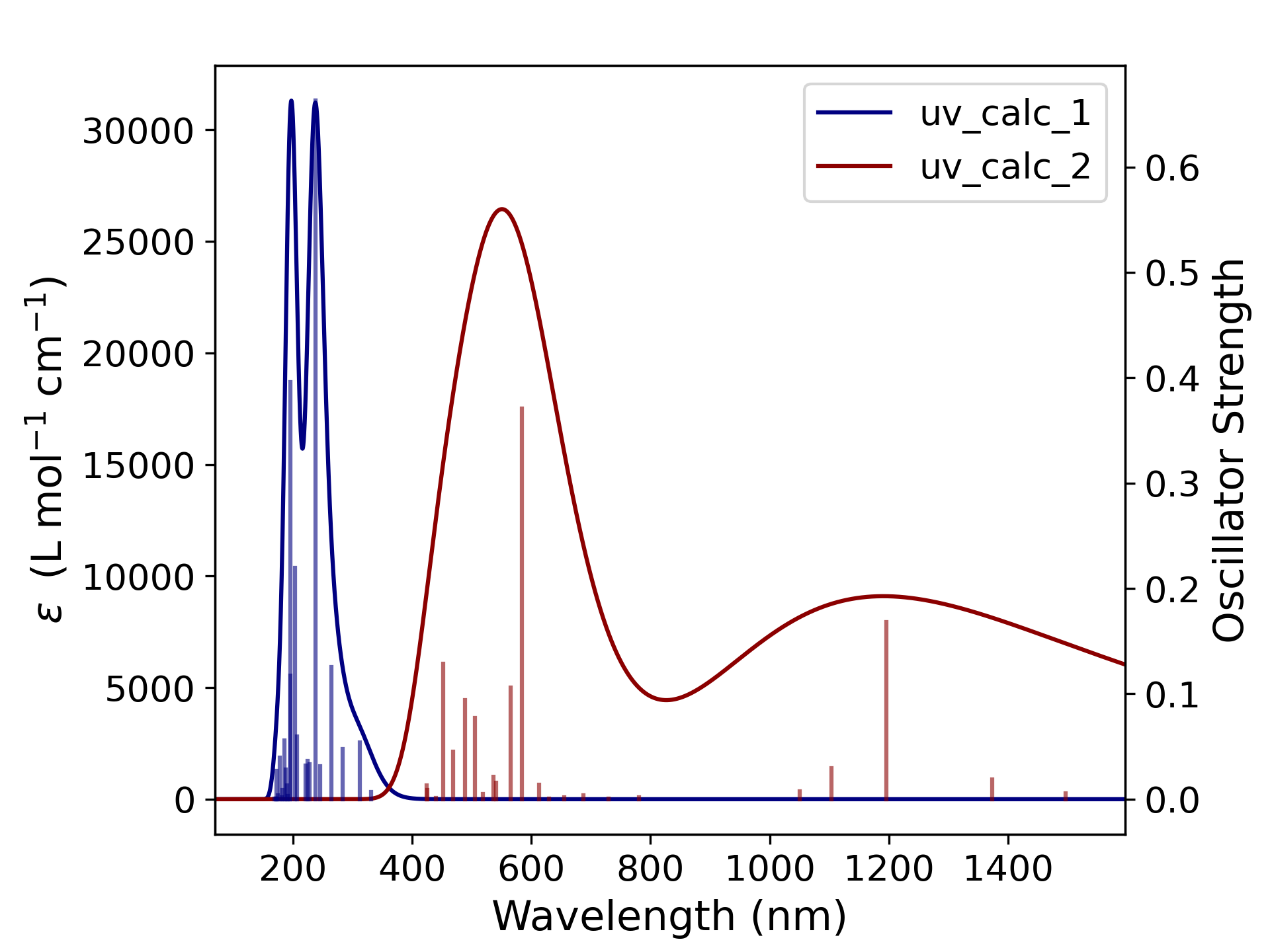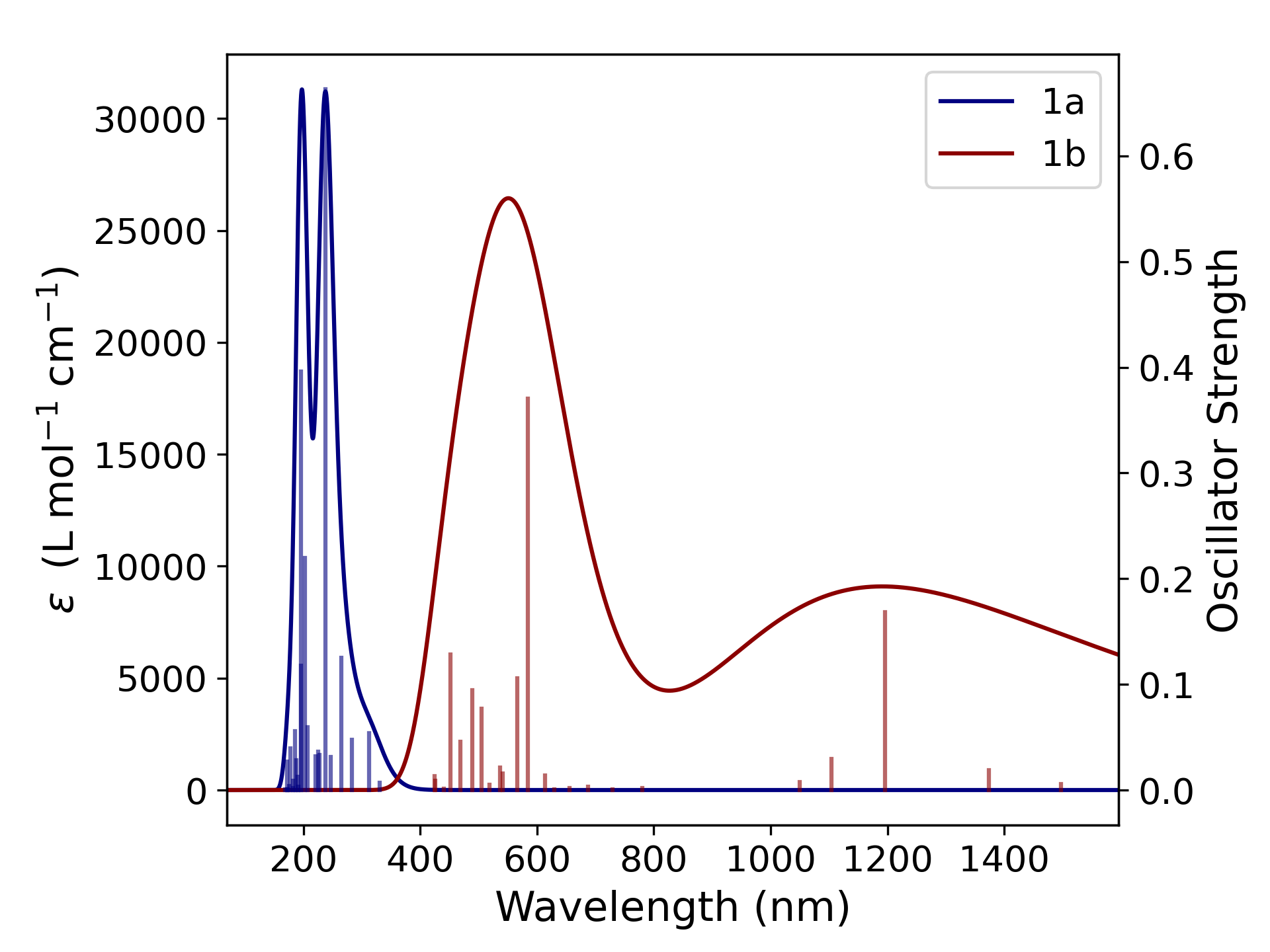uv.Plotter

Latest version: 1.0.0, updated at 2022-08-03
1. Overview
1.1 About uv.Plotter
uv.Plotter is an open-source Python software for easily creating UV-vis spectrum from Gaussian TD-DFT output file.
uv.Plotter is developed with Python 3.10.6, thus, users can run uv.Plotter through Python IDE. It can be freely download from the GitHub page. The source code, executable file for macOS and Windows could be found for the latest release.
1.2 How It Works
uv.Plotter reads Gaussian output for TD-DFT calculation from .log or .out file(s), extracts oscillator strength and calculate the absorption curve using Gaussian-type brodening. Basic mathematic information could be found from here.
2. Install
2.1 Run with Source Code
If Python IDE is installed, uv.Plotter could be run from the source code. Python 3.10+ is recommended. You can download the latest version of Python from homepage. uv.Plotter is running with external library matplotlib, numpy, openpyxl and Pillow, please make sure all of these lib are installed on your computer before running uv.Plotter.
2.2 Run with Executable File
2.2.1 Use Pre-packaged Executable File
Executable file for macOS and Windows were pre-packaged. Download the executable file from here. For masOS users, save it in the /Applications folder, and you can run uv.Plotter from Launchpad. Fow Windows users, double click the .exe file (PS: make sure the assets folder is at same dictionary with .exe file).
2.2.2 Common Issues
If the packaged programs cannot work due to system security problem, please refer to the following methods.
If warning window: “Cannot open an app from an unidentified developer” showed up when you run packaged executable file, please go to “System setting” -> “Security & Privacy” and click “Open Anyway”, click “Open”. Then, you could run the program by double click.
3. Usage
Main window of uv.Plotter is shown following. Users can open the TD-DFT output file(s) by click Open button. Up to 10 output files could be read at once.

Click ![]() Plot button to plot the UV-vis absorption spectra using built-in module.
Plot button to plot the UV-vis absorption spectra using built-in module.

The Label is useful when user plot more than one output files, it indicates the short name of each absorption curve those shown in legend. The default Label is the file name of output files.

Once the spectra windows were closed, a .png file would be saved at the same dictionary as the first output file. Using ![]() Save .txt and
Save .txt and ![]() Save .xlsx buttons, the .txt and .xlsx files including plotting data points would be saved also. The .txt file also inculdes the oscillator strength data, and .xlsx includes a UV-vis absorption spectrum in the file.
Save .xlsx buttons, the .txt and .xlsx files including plotting data points would be saved also. The .txt file also inculdes the oscillator strength data, and .xlsx includes a UV-vis absorption spectrum in the file.
Users can change the color and plotting parameters from the ![]() Setting panel. The colors were defined from matplotlib, please refer to the Appendix for more color defination.
Setting panel. The colors were defined from matplotlib, please refer to the Appendix for more color defination.

Default value of standard deviation is 0.4 eV, just same as GaussView. FYI, larger standard deviation value will give more broadening peaks in UV-vis absorption spectrum, while smaller value will give sharper peaks in spectrum.
If you want to change the plotting range, please modify the wavelength range in the setting window.